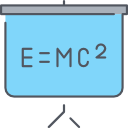Text
Microelectronics : Circuit Analyisis and Design
PHILOSOPHY AND GOALS
Microelectronics: Circuit Analysis and Design is intended as a core text in electron ics for undergraduate electrical and computer engineering students. The purpose of the fourth edition of the book is to continue to provide a foundation for analyzing and designing both analog and digital electronic circuits. A goal is to make this book very readable and student-friendly.
Most electronic circuit design today involves integrated circuits (ICS), in which the entire circuit is fabricated on a single piece of semiconductor material. The IC can contain millions of semiconductor devices and other elements and can perform complex functions. The microprocessor is a classic example of such a circuit. The ultimate goal of this text is to clearly present the operation, characteristics, and limitations of the basic circuits that form these complex integrated circuits. Although most engineers will use existing ICs in specialized design applications, they must be aware of the fundamental circuit's characteristics in order to understand the operation and limitations of the IC.
Initially, discrete transistor circuits are analyzed and designed. The complexity of circuits being studied increases throughout the text so that, eventually, the reader should be able to analyze and design the basic elements of integrated circuits, such as linear amplifiers and digital logic gates.
This text is an introduction to the complex subject of electronic circuits. Therefore, more advanced material is not included. Specific technologies, such as gallium arsenide, which is used in special applications, are also not included, although reference may be made to a few specialized applications. Finally, the layout and fabrication of ICs are not covered, since these topics alone can warrant entire texts.
Ketersediaan
Informasi Detail
- Judul Seri
-
-
- No. Panggil
-
621.38153 NEA m
- Penerbit
- New York : McGraw Hill., 2010
- Deskripsi Fisik
-
xxi, 1370 Hal, 25,5 Cm, Indek
- Bahasa
-
English
- ISBN/ISSN
-
978-007-128947-4
- Klasifikasi
-
621.38153
- Tipe Isi
-
-
- Tipe Media
-
-
- Tipe Pembawa
-
-
- Edisi
-
4
- Subjek
- Info Detail Spesifik
-
-
- Pernyataan Tanggungjawab
-
NEAMEN Donald A
Versi lain/terkait
Tidak tersedia versi lain
Lampiran Berkas
Komentar
Anda harus masuk sebelum memberikan komentar
 Karya Umum
Karya Umum  Filsafat
Filsafat  Agama
Agama  Ilmu-ilmu Sosial
Ilmu-ilmu Sosial  Bahasa
Bahasa  Ilmu-ilmu Murni
Ilmu-ilmu Murni  Ilmu-ilmu Terapan
Ilmu-ilmu Terapan  Kesenian, Hiburan, dan Olahraga
Kesenian, Hiburan, dan Olahraga  Kesusastraan
Kesusastraan  Geografi dan Sejarah
Geografi dan Sejarah